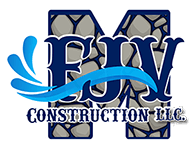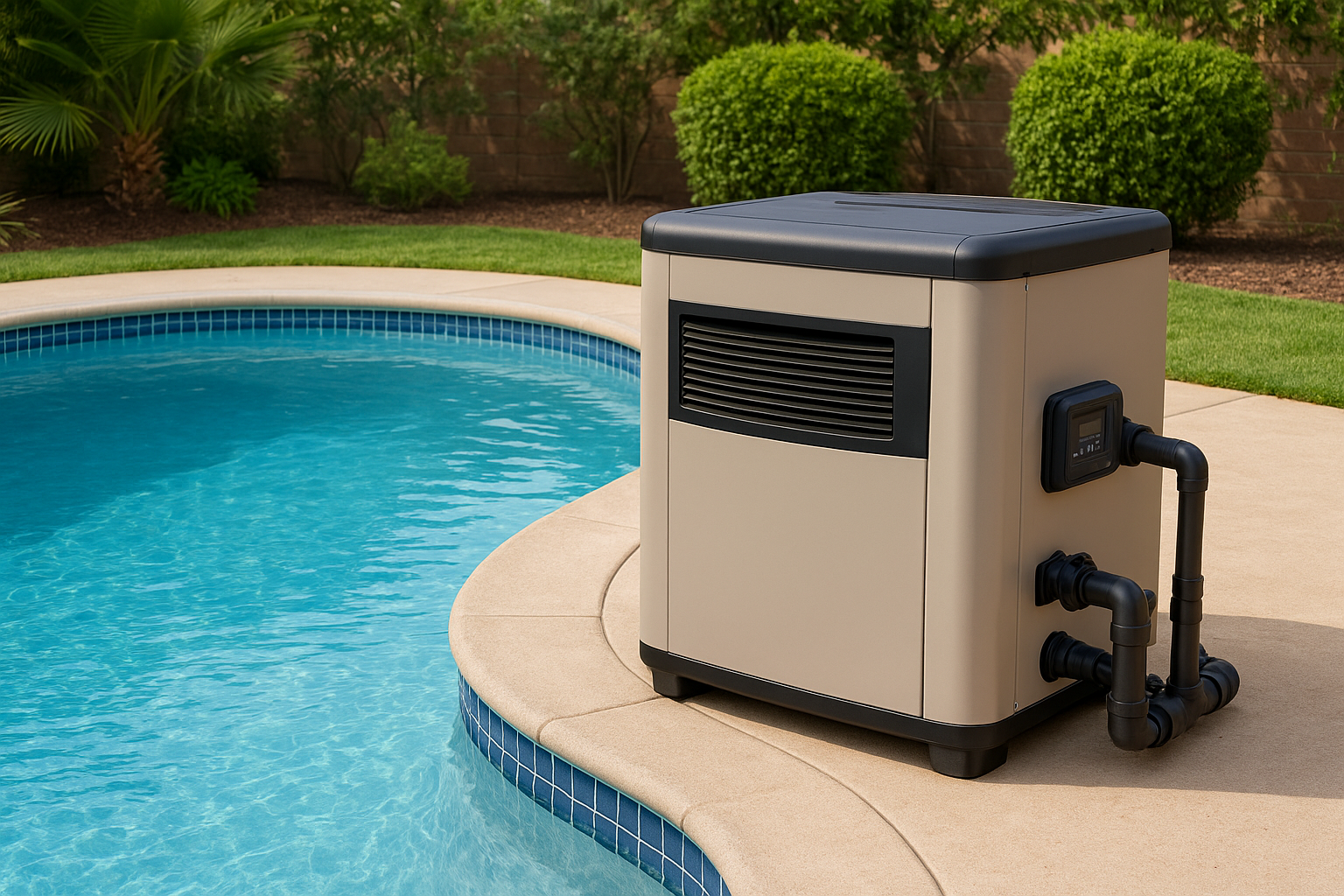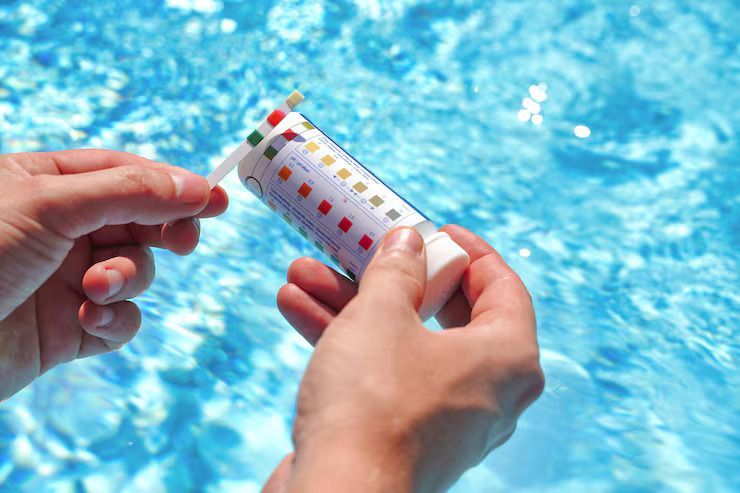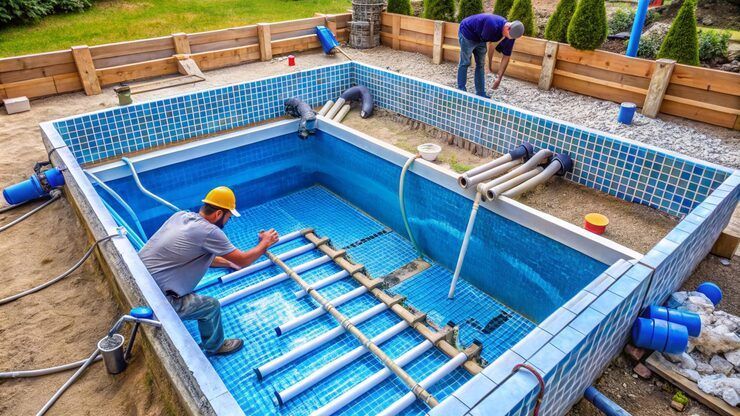What is the Average Size of an Inground Pool?
When planning a pool project, one of the first questions homeowners ask is: “What is the average pool size for inground installations?” The truth is, there isn’t a one-size-fits-all answer—but there are common dimensions that serve as helpful benchmarks. Most residential pool sizes inground range from 10 x 20 feet to 20 x 40 feet.
Knowing the average size of an inground pool helps you make the right decision for your space, budget, and lifestyle—so you can enjoy a pool that’s perfect for you and your family.
Table of Contents
- What Type of Inground Pool is Best?
- Common Inground Pool Sizes
- 8 Factors Influencing Your Pool's Size
- What is the Best Time to Buy an Inground Pool?
- What is the Lifespan of an Inground Pool?
- How Much Should I Budget for an Inground Pool?
- Frequently Asked Questions (FAQs)
- Start Planning Your Dream Pool With FJV Construction
Key Takeaways
✔ The average pool size for inground pools ranges from 10 x 20 to 20 x 40 feet.
✔ Choosing between fiberglass, vinyl, or concrete pools impacts available inground pool sizes and maintenance needs.
✔ Your yard space, budget, and primary use are the biggest factors in selecting the right standard backyard pool size.
What Type of In-Ground Pool is Best?
Choosing the right type of pool will determine your available inground pool sizes, overall costs, and long-term maintenance needs. Each pool material has its own strengths and limitations, so understanding the differences will help you select the best fit for your home.
Fiberglass Pools
Fiberglass pools come in pre-molded shapes and pool sizes inground, typically ranging up to 16 x 40 feet. They’re known for their durability, smooth finishes, and minimal maintenance. Installation is faster compared to other pool types since the shell is manufactured off-site. However, the fixed shapes and average pool size limitations mean less flexibility if you want a highly customized design.
Vinyl Liner Pools
Vinyl pools are versatile and can be built to match nearly any average pool size or shape. From compact plunge pools to larger lap pools, vinyl liners adapt easily to a wide range of standard backyard pool sizes. They are also one of the more affordable options initially.
Concrete (Gunite) Pools
Concrete pools are the gold standard for customization. They can be designed in nearly any shape, depth, or dimension, making them ideal if you want a unique layout or larger-than-average inground pool sizes. The trade-off is a higher upfront investment and more ongoing maintenance compared to fiberglass or vinyl.
Common Inground Pool Sizes
Not all pools are created equal—some are designed for relaxing and cooling off, while others are meant for exercise or large gatherings. Let’s look at the most common pool sizes inground.
Smaller Pools: 10 x 20 feet
Perfect for compact yards, these pools are great for quick dips or intimate family fun. Their average pool length makes them ideal for homeowners who want luxury without sacrificing yard space.
Medium Pools: 14 x 28 feet to 16 x 32 feet
This range has become the go-to standard backyard pool size. A 16 x 32 pool is often large enough for games, floating, and even some lap swimming, while still being budget-friendly and easier to maintain than larger options.
Larger Pools: 18 x 36 feet to 20 x 40 feet
For those who prioritize swimming laps, hosting big gatherings, or creating a resort-like feel, larger inground pool sizes are ideal. With an average pool length closer to 40 feet, they provide plenty of room for entertainment and exercise.
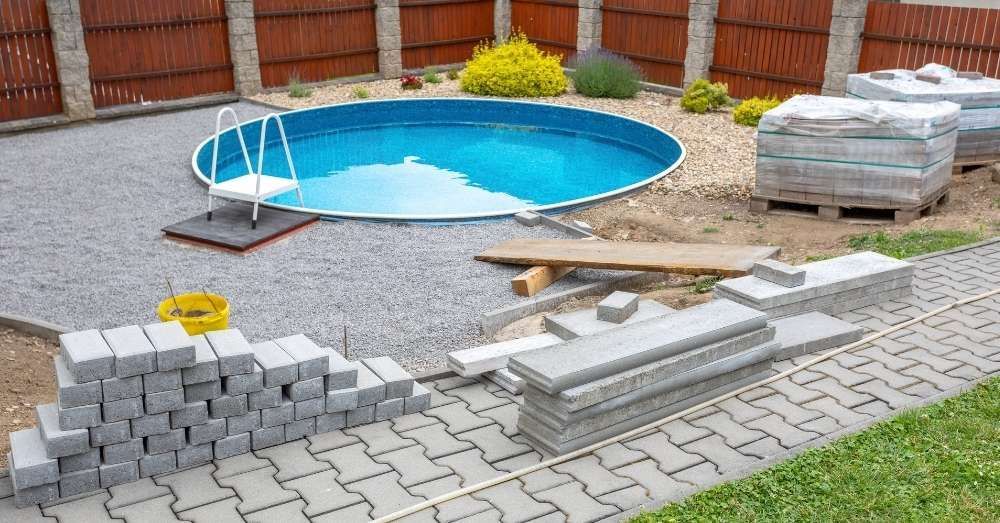
8 Factors Influencing Your Pool's Size
When planning your backyard project, it’s important to remember that not all pool sizes inground are practical for every property. Your decision will be shaped by space, budget, intended use, and several other considerations.
1. Available Space
Your backyard’s layout is often the first factor to consider. A larger lot allows for more flexibility in inground pool sizes, while smaller yards may require compact designs. For example, a 10 x 20-foot pool might be perfect for a tight space, while properties with more room can accommodate the standard backyard pool size of 16 x 32 feet or larger.
2. Budget
The larger the pool, the higher the price tag. Bigger pool sizes inground require more excavation, concrete or fiberglass, and larger filtration and pump systems. Even a modest difference in dimensions can increase material costs and long-term maintenance.
3. Primary Use
Your intended use should heavily influence your choice of size. If you’re planning to use your pool for fitness, a longer average pool length of 30 to 40 feet is ideal for lap swimming. For family fun, entertaining, or simply cooling off, smaller to medium standard backyard pool sizes are often more than enough.
4. Shallow End Depth
Pool depth affects not only usability but also the overall footprint. Families with children often prefer gradual slopes with shallow ends between 3.5 and 5 feet, which impact the required length and width of the pool. Pools designed for diving or exercise may need deeper sections, which expands the average pool size and construction cost.
5. Local Building Codes & HOA Rules
Regulations may dictate how close your pool can be to property lines, establish fencing requirements, or even set limits on the maximum allowable inground pool sizes in your neighborhood. In fact, the number of municipalities requiring pool fencing has increased by 20% over the past five years, reflecting a stronger emphasis on safety.
6. Landscaping & Add-Ons
Decking, patios, water features, and spas are all popular additions, but they reduce the available footprint for your pool. If you plan to integrate a fire pit, outdoor kitchen, or lounge area, you may need to adjust your pool dimensions. Factoring these elements into your design early ensures your chosen standard backyard pool size fits seamlessly into your overall outdoor living space.
7. Climate & Sun Exposure
In warmer climates, homeowners often prefer larger inground pool sizes for more swimming and cooling space. In cooler regions, a smaller average pool size may be more practical, as it’s easier to heat and maintain. The orientation of your yard also matters—placing your pool in a sunny spot helps reduce heating costs while improving comfort.
8. Future Plans & Resale Value
If you anticipate selling your home in the future, consider the resale appeal of your pool. A pool that matches the average pool size in your area is often more attractive to buyers. Oversized pools may deter some buyers due to upkeep, while very small pools may not add as much value.
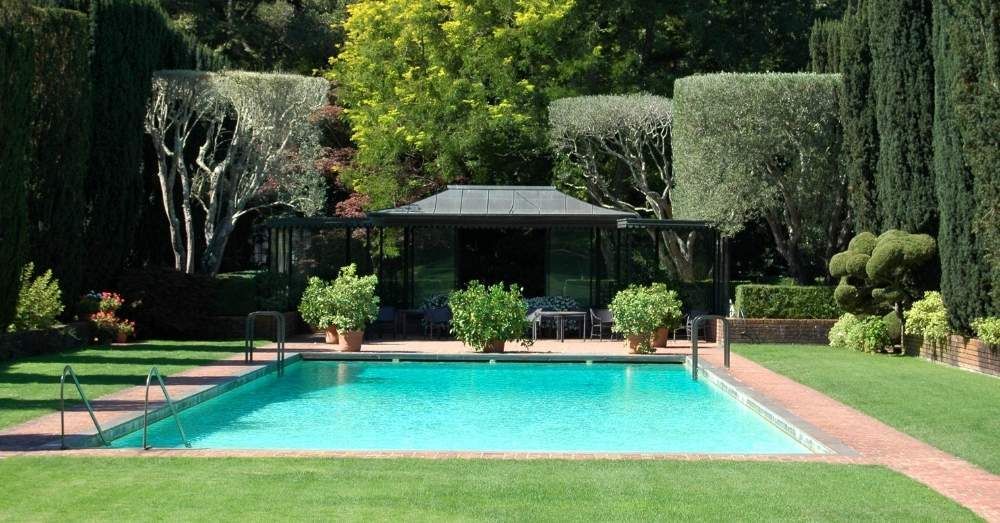
What is the Best Time to Buy an Inground Pool?
Many homeowners assume that spring and summer are the best times to start their projects because warm weather inspires backyard upgrades. However, those peak seasons are also when demand is highest—meaning installers are booked up, and prices for materials and labor are at their peak.
If you want to save money and enjoy faster installation, consider scheduling your pool build in the fall or winter months. During this time, pool companies often have more availability, and you may even find discounts on construction costs or accessories. By the time summer arrives, your pool will already be ready for use.
What is the Lifespan of an Inground Pool?
The longevity of your pool depends heavily on its construction material, maintenance routine, and local climate conditions. Here’s what you can expect from the most common types:
Fiberglass Pools
Fiberglass models are built for durability and can last 25–30 years with proper care. Their smooth surfaces resist algae growth, which makes them easier to clean and maintain compared to other inground pool sizes.
Vinyl Liner Pools
Vinyl liners are more affordable up front, but their liners typically last 6–12 years before needing replacement. The pool structure itself can last for decades, especially if it’s well-maintained.
Concrete (Gunite) Pools
Concrete is the most long-lasting option, often exceeding 40 years with regular resurfacing every 10–15 years. These pools are highly customizable, making them a common choice for larger average pool sizes or unique designs.
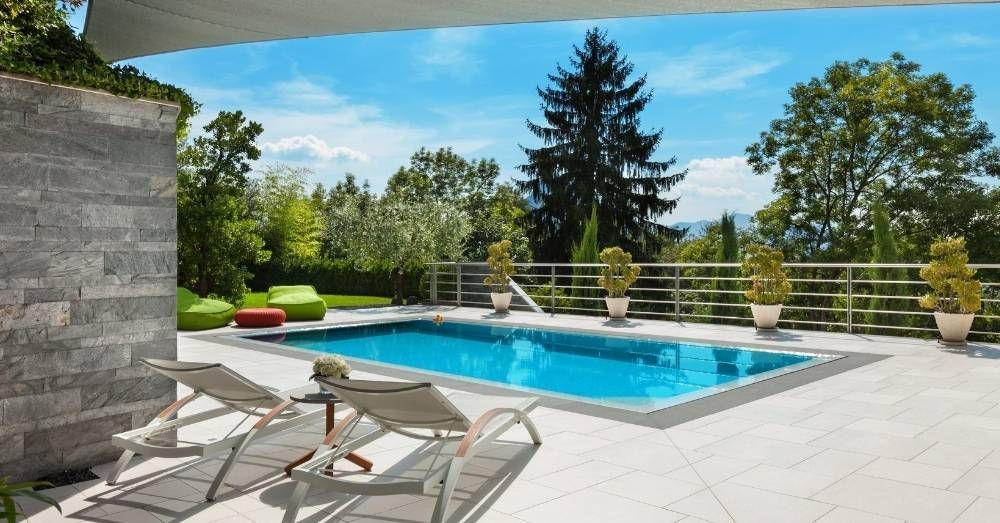
How Much Should I Budget for an Inground Pool?
Budgeting for a pool involves more than just the upfront construction costs. Size, material, add-ons, and landscaping all play a role. For example, a standard inground pool measuring 12 feet by 24 feet typically costs between $38,000 and $100,000 to install.
Here’s a breakdown by common inground pool sizes:
Small Pools (10 x 20 feet)
These compact pools typically fall at the lower end of the cost spectrum. They require less excavation, use fewer materials, and generally have lower ongoing maintenance costs. A small average pool size is ideal for homeowners with limited space or tighter budgets.
Standard Backyard Pool Size (16 x 32 feet)
This mid-range option is the most popular among homeowners. A 16 x 32 pool provides plenty of swimming space without overwhelming the yard or the budget. Construction costs are moderate, and maintenance expenses are manageable compared to larger designs. For many families, this standard backyard pool size offers the best balance of usability and value.
Large Pools (20 x 40 feet)
Expansive pools come with higher upfront costs for excavation, materials, and equipment. They also require stronger pumps and filtration systems to handle the increased water volume. While these average pool sizes deliver a true resort-like feel, they also come with higher heating, chemical, and maintenance costs over time.
Additional Costs to Consider
- Decking and Patios: Expanding your outdoor living space increases costs but adds significant usability.
- Water Features & Spas: Fountains, waterfalls, or hot tubs add aesthetic appeal and relaxation value.
- Landscaping: Designing a cohesive backyard environment can transform the look of your pool area.
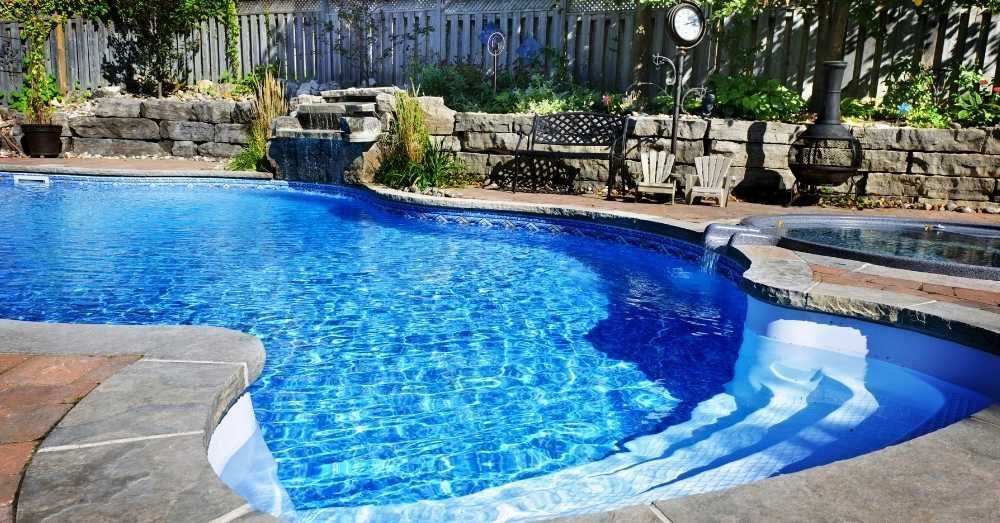
Frequently Asked Questions (FAQs)
How deep should an inground pool be for both kids and adults?
A safe and versatile depth for most families is 3.5 feet in the shallow end and around 5 to 6 feet in the deep end. This setup works well across different inground pool sizes and ensures both children and adults can enjoy the pool comfortably. Depth planning also impacts the average pool size, so it’s important to balance safety with functionality.
Can I customize inground pool sizes to fit an irregularly shaped backyard?
Yes, custom designs allow you to adjust the pool sizes inground to fit unique spaces or landscaping layouts. Concrete pools in particular offer flexibility in length, width, and depth. This means you can create an average pool size that matches your specific yard dimensions without sacrificing style.
Do larger inground pool sizes require different equipment?
Absolutely. Bigger average pool sizes need larger pumps, stronger filtration systems, and sometimes multiple skimmers to keep the water clean. The average pool length also influences the type of circulation and heating equipment required. Proper sizing of equipment ensures efficiency and extends the lifespan of your pool.
How do pool sizes inground affect heating costs?
The larger the average pool size, the more water volume there is to heat. A compact 10 x 20 pool is quicker and less expensive to heat compared to a 20 x 40 pool. Homeowners who choose larger inground pool sizes can offset costs with energy-efficient heaters, solar covers, or by optimizing placement in sunny areas of the yard.
What is the most economical inground pool size for long-term maintenance?
For most homeowners, a standard backyard pool size offers the best balance between upfront investment and ongoing maintenance costs. This average pool size is large enough for family fun and exercise, yet small enough to keep heating, cleaning, and chemical expenses manageable compared to oversized inground pool sizes.
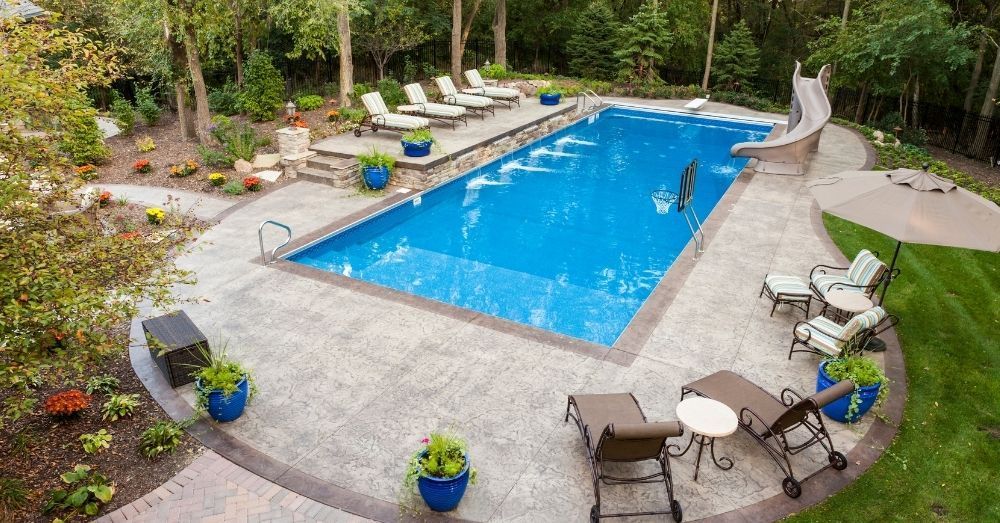
Start Planning Your Dream Pool With FJV Construction
Your pool is an investment in family memories, relaxation, and lifestyle. Whether you’re considering a small plunge pool or a full-sized lap pool, choosing the right inground pool sizes makes all the difference.
Ready to take the next step?
Contact FJV Construction today for
expert design and installation of custom inground pools that fit your vision and budget.
